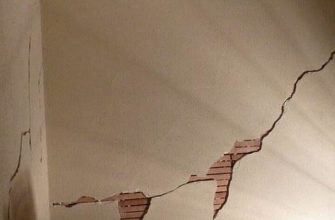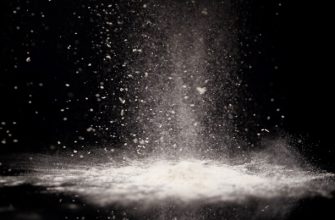Spackle also known as joint compound, or drywall spackle, is a sort of ready-to-use filler compound that comes in a variety of shapes and sizes. This spackling paste is essential for filling holes and smoothing cracks before painting to get a smooth, flat finish on your walls.
If you want to spackle on a different surface than wood, then check out this list of surfaces you can spackle on.
Before thinking of buying the spackling compound in bulk maybe you should know how long does spackle last, Before your Wife starts complaining about those costly bulky containers filled with hardened spackle which is of no use now.
Well if you have made that mistake, then we can help you in solving one of the issues above, (can’t do anything about the beautiful wife) , check here how to rehydrate the spackling compound.
Can Spackle be used Outdoors?
Yes definitely! Although lightweight spackle is commonly used on interior surfaces, there is also heavier spackle version which is used outdoors. This is because the home’s exterior is constantly exposed to direct sunlight, higher temperatures, higher humidity fluctuations, as well as wind, hail, sleet, rain, snow, and, in many cases, blowing sand and dirt. As a result, outdoor spackle must be more adaptable and resistant to natural calamities than interior spackle.
Also, spackle exterior siding when significant cracks and cuts occur in the wood to guarantee a smooth surface. For more effectiveness, take the help of a water-based exterior-grade spackle to fill in the rough areas that remain after you have removed any loose paint and coated the surface with a latex primer.
Confused between caulk and spackle? Which one to use first, try this guide!
Is Spackling Waterproof?
Not at all!
Even though spackling compound and caulk are used by painters to fix gaps and holes, caulk is more of a flexible coating that resists moisture, whereas spackling compound dries hard and is definitely not water-resistant. After it dries, spackle cannot be re-wetted. It is not soluble in water and thus is definitely not waterproof. Shrinkage is not an issue with the latest spackling products.
Thus, until and unless the spackle repair is waterproof, water can destroy it when it is exposed and unpainted. So, in case, you are working outside, check the weather forecast to be sure it won’t rain before the patch has time to dry and receive a coat or two of exterior paint.
Other than that, you can, however, purchase waterproof spackle, such as the DAP INC 18741 Platinum 16oz Patch Filler. Spackling pastes like these have the exceptional quality of drying to a watertight or waterproof solid and work with a variety of building materials, making them a great choice for exterior repairs.
They are simple to use, paintable and sandable. It can be applied to metal, wood, fibre cement, PVC, composites, and other materials.
Here’s a link to a video that shows you how to use a new waterproof outdoor wood filler or spackle to repair gaps and divots in exterior wood siding before painting it:
Can Spackle hold screws
How do you Spackle on outside Wall?
Here’s all the step-by-step methods with which you can spackle on the outside wall:
First Method:
Step 1: Choose the appropriate sort of modern spackle.
Generally, modern-day spackling compounds are much lighter in weight. However, as mentioned earlier, you can still buy oil or latex spackle as they are heavier and are not re-wettable once they dry. It does not dissolve in water and will result in a more uneven finish.
The newest spackling compounds do not shrink, so they can be used to cover small areas with minimal sanding. Spackle dries rapidly, sands easily, and can be painted over with latex or oil paint after it has dried. The key to achieving a smooth wall is to correctly sand and apply primer.
Step 2: Sand on the Surface
Before applying the primer, sand down the area where you want to spackle. This can be done either with a sander or a sandpaper. Also, before proceeding, make sure the surface is totally free of sand dust. Keep in mind that spackle is really not meant to be used to float drywall joints or to fill particularly deep holes.
Step 3: Use a Primer
The most frequent blunder that painters make is failing to prime all raw wood surfaces before applying spackle, and it is a costly one. If you don’t prime the wood first, the surface will be uneven, the finish will have dull areas, and whatever paint you apply won’t be able to blend properly. It is indeed possible that the completed paint will have a few sparkling areas, so it is crucial to utilize the appropriate primer. There are different primers that are used for bare wood and corroded metal. If the wood has knotholes, fill them with a substance that will seal in the sap.
Bare wood will wick moisture away from the patch. The surface can get dry and cracks could form.
So you must:
- First make the wood.
- Let it dry before applying the spackle.
- Use stain-blocking or stain-kill primers sparingly, as they will result in high-gloss patches on the wall known as shiners. These spots basically happen where the paint is too shiny.
The final paint itself is the best form of primer to use. Other than that there is a form of primer called polyvinyl acetate, or PVA, which is a new type of drywall primer.
Step 4: Seal Exterior Spackle By Using Paint
- Apply one layer of finish paint to the exterior spackle to seal it.
- After that, wait for two hours for it to dry.
- After that, apply a second coat.
When you are not using your spackle can, remember to keep the lid on it.
Learn to prevent moldy spackle
Also learn whether spackle is Fire resistant or not
Second Method:
Step 1: Determine the Hole Size & Pick Your Compound
After estimating the size of the hole to be fixed, choose your compound. For minor holes, a lightweight spackle with a binding agent is ideal. So, if your hole is more than ¾ inch wide, an all-purpose or heavy compound may be a better option.
Step 2: Prepare the Area or Hole To Be Spackled
To improve the sticking power of the putty, prepare the area or hole so that the spackle adheres properly. Clean all dirt from within and around the hole with a putty knife or fine-grit sandpaper. Sand down any rough edges or debris around the hole’s circumference until it becomes smooth.
Step 3: Mix & Apply to the Area or Hole in the Wall
Prepare or mix the compound of your choice and apply it to the area that needs to be repaired.
The way you prepare the spackle depends on the sort of putty you purchase. If you bought powdered spackle, combine it with little amounts of water until you have a thick yet spreadable consistency. While are using a powdered compound that requires premixing, be certain you just mix the amount you will need for the current repair. After all, you obviously would not want to waste money by combining more ingredients than is required. You should make a modest batch; you can always make more if necessary.
The pre-mixed spackle compounds are usually fine, but if you are using a previously opened container, stir it thoroughly. So, fill your putty knife with a generous amount of spackling compound and work your way down from the top.
With the edge of the putty knife, scoop out a little more spackling compound than you will need to fill the hole. Hold the putty-loaded knife at an angle slightly above the injury site and patch with a downward motion.
Step 4: Level the hole or area
After you have fully covered the hole, use your putty knife to level it off. Scrape away any excess putty with the knife at a 90-degree angle, being careful not to pull the putty out of the hole.
Make sure not to overwork the putty and pull it out of the hole.
When you are spackling the wall, do not worry about perfection. This is because you will obviously be sanding it smooth as soon as it is entirely dried.
Step 5:
Use a moist or damp rag, towel, sponge, or cloth to gently wipe or clean any leftover compound from the wall near the repair spot or area you have been mending.
Step 6
Since most spackle compounds dry, they shrink, so you must return to the spot and review your work to notice if the patch has receded. If that is the case, just add another coat of spackle and wait for another two hours. Most holes larger than ¼ inches must be filled multiple times. Do not worry if there is still some spackle left over. It will be smoothed out during the sanding process.
Step 7:
Let the spackling compound dry for several hours. Sand the repaired area lightly until it is smooth and flush with the surrounding wall. Remove any dust that has accumulated.
Step 8
Last, simply prime and paint the patched repaired area until it merges in with the surrounding wall.
Bonus Tip:
Here’s how to get that smooth, original finish back while repainting your home.
- Use a water-based exterior-grade spackle to fill in the rough areas that remain once you have removed any loose paint and coated the surface with a latex primer.
- Spread a uniform layer of spackle and smooth it out with a four-inch putty knife.
- If necessary, lightly sand it after it has dried and apply a second coat in the same manner.
- Apply your finish coat once the surface is completely smooth.
With the help of everything mentioned above, once you have mastered how to dazzle on an outdoor wall, sooner or later, you will be able to have a seamless look on the whole exterior of your house or building!









